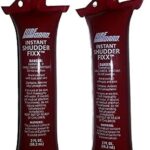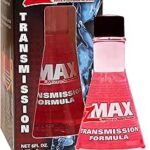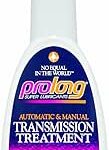As an Amazon Associate, I earn from qualifying purchases.
Transmission additives are products designed to improve the performance and longevity of a vehicle’s transmission. These liquids are poured into the transmission system to help clean, lubricate, and protect its internal parts. We find that many drivers use additives to reduce noise, smooth shifting, or try to fix small leaks without costly repairs.
There are several kinds of transmission additives, including those that stop leaks, reduce friction, or clean out deposits. With many options available, it’s important to choose an additive that matches your car’s needs and is compatible with the type of transmission fluid your vehicle uses. Automatic and manual transmissions use different fluids, so using the wrong additive can cause problems.
Before buying, it’s crucial to check the compatibility, ingredients, and intended effect of the additive. Some contain harsh chemicals that could harm seals or gaskets, so reading the label is important. Picking the right transmission additive can help extend your transmission’s life and improve driving performance, so knowing what to look for makes the decision easier.
Best Transmission Additives
We have researched and selected the best transmission additives available today. Our list helps you find reliable options to keep your vehicle running smoothly and protect your transmission from wear.
Lucas Oil Transmission Fix (paid link)
For those wanting smoother shifting and basic leak control in worn transmissions, this is a reliable option to consider.
Pros
- Can help reduce transmission slipping and rough shifting
- Simple to use with no draining required
- Works with most vehicles except CVTs and dual-clutch transmissions
Cons
- Does not fix severe transmission damage
- Thick formula may be slow to pour in colder weather
- Only provides temporary results for some issues
Lucas Oil Transmission Fix is designed for anyone dealing with slipping, hard shifts, or minor leaks in their ageing transmission. With its easy pour-in method, we don’t need to remove existing fluid, which saves time and effort. The thick liquid aims to provide smoother gear changes and increase the life of transmission fluid.
We like that this additive is free from solvents, which can sometimes be harsh on seals and components. Its main function is to condition seals and gears, helping to cut down on clunky gear shifts and minimise leaks. For standard cars, one bottle is suggested, but for larger vehicles or heavier wear, an extra bottle might be needed.
It’s important to be realistic—while the product can offer noticeable improvement for worn but serviceable transmissions, it will not repair more serious or mechanical faults. Those with advanced issues should be prepared to seek professional repairs. Overall, Lucas Oil Transmission Fix is best suited for drivers needing a stopgap solution or routine preventive maintenance.
XADO Transmission Additive (paid link)
This product is a strong choice for those who want to support their automatic or CVT transmission and possibly stop slipping or shudder.
Pros
- Protects and restores worn transmission parts
- Can reduce noise and vibration
- Works with most gearbox types
Cons
- Full results may take many miles to appear
- Cannot fix major mechanical damage
- Needs careful application with its syringe
We find the XADO Transmission Additive stands out because it’s made to rebuild and protect metal parts in the transmission. Its formula addresses slipping, shudder, and other issues that can affect gear changes. According to the maker, it even shields against wear and high heat.
This additive can be used in a range of gearboxes, like automatic, CVT, and semi-automatic, making it versatile for different car owners. A key benefit is it targets common problems such as rough shifting and unwanted noise. We see this as useful for those facing minor performance drops, especially in ageing vehicles.
It’s important to note that the full benefit takes some time and miles to be seen. While it may help prevent some issues, it cannot repair severe mechanical faults. Users should also be comfortable using a syringe-style applicator, as this is how the product goes into the system. Overall, it’s a helpful option for ongoing transmission care.
Hot Shot’s Secret Shift Restore Additive (paid link)
Those looking to improve transmission smoothness and reduce friction may want to consider this additive for newer or higher-mileage vehicles.
Pros
- Helps reduce harsh or rough shifting
- Can lower operating temperatures in the transmission
- Works on both automatic and CVT gearboxes
Cons
- May not resolve all serious transmission issues
- Some users notice only a small change
- Fluid is thinner than standard transmission fluid
Hot Shot’s Secret Shift Restore Additive uses a strong cleaning agent designed to cling to all metal surfaces inside the transmission. With its ability to reduce friction and clean away residues, this product aims to support smoother gear changes and lower running temperatures. The formula works by removing build-up that accumulates over time, which can help keep the internal parts moving freely.
We find the fact that it works on both automatic and CVT transmissions quite appealing. Adding it to the gearbox fluid is fairly straightforward, though users should make sure not to overfill the system. While it has helped many people achieve smoother shifting, a few have mentioned limited results, especially with older or heavily worn transmissions.
Some drivers observed noticeable improvements in shift quality after using the additive, particularly in vehicles with over 100,000 miles. However, it is important to understand that this product cannot fix all transmission problems. Those with severe issues may need more extensive repairs beyond what an additive can offer.
Lubegard Shudder Fix (paid link)
Lubegard Shudder Fix is a practical option for anyone looking to reduce transmission shudder quickly with minimal hassle.
Pros
- Addresses transmission shudder almost immediately
- Simple to use; no extra tools needed
- Recognised by many professionals
Cons
- Results may not last in severe cases
- May not suit every type of transmission issue
- Not a permanent solution for failing transmissions
We find Lubegard Shudder Fix stands out for its targeted approach. It’s designed for cases where vehicles experience torque converter shudder, a common issue in aging cars or those with worn automatic transmissions. When ease-of-use is a priority, this additive comes ready to pour, and many users mention seeing noticeable improvement shortly after adding it to the transmission fluid.
A key advantage is that this product is well-regarded by professionals and drivers alike, earning repeated votes of confidence in the automotive community. While it helps address symptoms fast, it’s important to remember that it cannot repair severe mechanical problems. For those needing a quick fix before heading to the mechanic, it could provide much-needed relief.
It is also worth noting that while Lubegard Shudder Fix can prolong the life of a transmission suffering from light shudder, it’s not meant to resolve every transmission problem. We suggest using it as a short-term aid while planning for more comprehensive service if symptoms continue.
Lubegard ATF Protectant (paid link)
Lubegard ATF Protectant is a strong pick if we want to improve the performance and lifespan of our vehicle’s transmission.
Pros
- Helps reduce heat and transmission wear
- Can soften and quiet harsh or noisy shifts
- Works with many automatic transmission fluids
Cons
- Not suitable for Ford Type F or CVT transmissions
- Results on seriously damaged transmissions may be limited
- Overuse could lead to overfilling if directions are ignored
This additive supports transmission function and may help stop common issues like clutch chatter or shift shudder. It is compatible with a wide range of vehicles that use DEXRON, MERCON, or most other OEM automatic transmission fluids, which makes it a versatile choice for many drivers.
We can appreciate that Lubegard’s formula is designed to guard against heat and oxidation, helping the transmission fluid last longer under tough conditions. For people with heavy-duty or ageing transmissions, this could mean less wear and better reliability. The product is also easy to use, only needing a small amount mixed in with the existing transmission fluid.
It’s important to follow the instructions carefully, as too much can cause problems instead of benefits. It does not fit every type of transmission, so we should check our vehicle’s needs first. For those seeking a straightforward solution to support their automatic gearbox, Lubegard ATF Protectant is worth considering.
Bar’s Leaks Axle & Diff Gear Repair (paid link)
For those needing a straightforward solution to minor gear oil leaks and noisy differentials, Bar’s Leaks Axle & Diff Gear Repair is worth our consideration.
Pros
- Blends with many types of gear oils, both synthetic and conventional
- Aims to stop small seal leaks and can cut down on differential noise
- Helps protect metal parts from wear and corrosion
Cons
- May not fix severe leaks or damage
- Needs proper mixing for best results
- Targeted more for gear issues than automatic transmissions
Bar’s Leaks offers a blend designed for gearboxes, axles, and differentials. It addresses minor leaks and aims to help us avoid messy drips on the driveway. Many users mention noise reduction and smoother gear operation after use.
The additive mixes well with a wide range of oil types and gear grades, which means compatibility is unlikely to be an issue for most vehicles or equipment. It tries to stop leaks by conditioning seals and adds extra metal protection to extend service life.
It’s most effective for maintenance or small issues, not for large or ongoing leaks. Our best results come when we follow dosage guidelines and make sure the product is evenly mixed with our gear oil. For larger repairs, we may still need mechanical help, but this product can buy us time and peace of mind.
Lubegard Platinum ATF Protectant (paid link)
This product is a good choice for those who want to boost the performance and lifespan of their automatic transmission fluid.
Pros
- Helps reduce transmission shudder and rough shifts
- Can be used to convert regular ATF to different vehicle-specific types
- Does not include harmful ingredients like zinc or ash
Cons
- Not intended for use with Ford Type F or CVT transmissions
- Needs to be measured properly to avoid overfilling
- May not resolve issues caused by serious mechanical problems
Lubegard Platinum ATF Protectant is aimed at drivers who want to improve transmission smoothness or extend ATF life. The main draw is its compatibility with several OEM fluid types, which could save us from buying multiple fluids for several cars.
Another highlight is its use of patented technology to tackle friction and wear. This can help our vehicle run more smoothly and keep seals and valves in better shape over time.
However, we should note that it’s not designed for every transmission. The instructions need to be followed closely, especially regarding the amount to add. If our transmission has existing mechanical faults, this additive is unlikely to fix them. Overall, it’s a versatile additive that suits regular upkeep and minor transmission concerns.
XADO Automatic Transmission Additive – AMC Slip Fix (paid link)
This additive may be a good choice for those looking to improve transmission shifting and reduce slipping in automatic gearboxes.
Pros
- Helps reduce hard shifting and shudder
- Designed to protect and restore transmission metal surfaces
- Compatible with most types of automatic transmissions
Cons
- Effectiveness varies by vehicle and condition
- Some users report little or no noticeable difference
- Packaging and seal quality could be improved
XADO AMC Automatic Transmission Additive stands out for its speciality atomic metal conditioner, which aims to restore worn surfaces inside transmissions. The formula is designed to improve shifting smoothness and cut down on shudder, providing a more reliable drive.
We like that it works with many transmission types, including CVT and DSG, offering a flexible solution for owners of different vehicles. Even though some users have seen good improvements in shifting and noise reduction, not everyone reports a marked difference after use.
While it could make a noticeable difference for transmissions showing early signs of wear, results aren’t guaranteed in every case. Some concerns about packaging may give us pause, but for those who want to try an additive before seeking pricier repairs, XADO’s Slip Fix additive is one of the more advanced options on the market.
Lucas Oil Transmission Fluid Conditioner (paid link)
Those of us looking to keep our automatic transmission running smoothly should consider this additive for its potential to help with shifting and noise.
Pros
- Can improve gear shifts for some vehicles
- May help reduce noise and shudder
- Works with both new and older transmissions
Cons
- Not suitable for CVT transmissions
- Might not fix severe transmission issues
- Effectiveness can vary depending on the vehicle
Lucas Oil’s Transmission Fluid Conditioner stands out for those interested in extending the life of their transmission. It’s compatible with most automatic transmission fluids and claims to help with smoother gear changes and quieter operation. The formula also aims to keep seals conditioned, which may help prevent leaks.
We appreciate that this product is designed for a wide range of vehicles, including older models that need extra care. It can be added during regular maintenance or when minor shifting problems start to show. There’s no need for complicated application procedures—just add it to the fluid.
It’s important to remember that this additive is not recommended for CVT transmissions, and it won’t solve every transmission problem. For vehicles with serious transmission damage or advanced issues, professional service will still be necessary. Overall, Lucas Oil Transmission Conditioner could be an affordable step in ongoing maintenance.
Liqui Moly ATF Additive (paid link)
Anyone looking to rejuvenate seals and improve shifting in an automatic transmission may find this additive a practical option for regular maintenance.
Pros
- Can help prevent and fix minor transmission leaks
- Supports smoother shifting and quieter operation
- Potentially extends the life of automatic transmissions
Cons
- May not fix severe mechanical problems
- Only works with automatic transmissions, not manuals
- Results may vary depending on the age and condition of the vehicle
This additive from Liqui Moly is formulated to help maintain rubber and plastic seals inside power-steering systems and transmissions. By conditioning old seals, it can reduce the risks of leaks developing and may help remedy small leaks that have already started. The product also claims to clean out transmission holes and ducts, benefitting overall performance.
We appreciate that it’s easy to use for those who want a simple way to try and improve transmission performance before tackling expensive repairs. With regular use, it might help lower noise levels from the power-steering and gear shifts, which could be especially helpful in ageing vehicles.
While it offers benefits for many automatic transmissions, it’s important for us to remember it won’t resolve serious mechanical failures. If seal or internal transmission damage is too severe, professional repair will likely still be needed. Nonetheless, for general preventive care, Liqui Moly ATF Additive (paid link) is a practical choice.
Buying Guide
When we shop for transmission additives, we should keep a few key features in mind. The right choice can help protect our vehicle and keep it running smoothly. Here are some things to consider:
Compatibility:
We need to make sure the additive works with our car’s transmission type. There are special formulas for manual and automatic systems.
Purpose:
Some additives fix leaks, while others focus on smoothing shifts or reducing noise. We should decide what problem we want to address before buying.
Ingredients:
Look for products with clear ingredients. Avoid additives with harsh chemicals that might damage seals or other parts over time.
Ease of Use:
We should pick an additive that is simple to apply. Many come with clear instructions, but we should always read the label before use.
| Feature | What to Check For |
|---|---|
| Compatibility | Manual or automatic? Always double-check the label. |
| Function | Leak stopper, smoother shifts, or cleaner? |
| Size | Comes in different bottle sizes—choose what fits our need. |
| Safety | Non-toxic, safe for seals and gaskets. |
Reviews:
Checking user reviews can help us find out how well the additive works. Real experiences offer helpful insight.
Price:
Price varies between products. We don’t always have to buy the most expensive option, but very cheap products may not work as well.
















